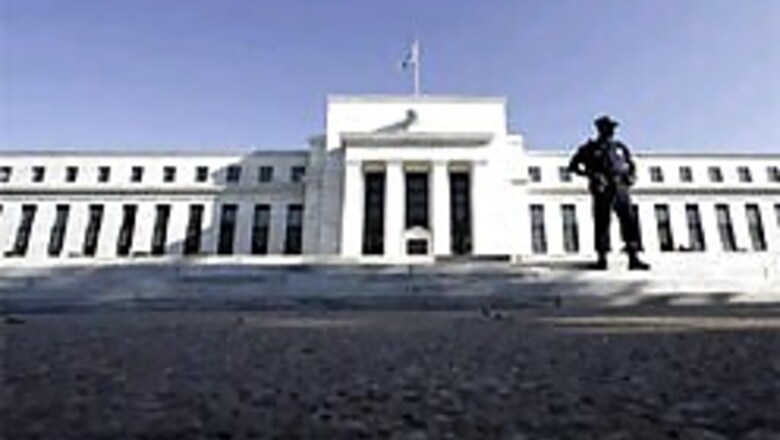
views
Washington: The US Federal Reserve on Wednesday cut a key interest rate for the second time in just over a week, reducing the federal funds rate by a half point. It also signalled that further rate cuts were possible.
The Fed action pushed the funds rate to 3 per cent. It followed a three-fourths of a percentage point cut on January 22, a day after financial markets around the world had plummeted on fears that the US economy was heading into a recession. That decrease had been the biggest one-day move in more than two decades.
The half-point cut on Wednesday followed news that the economy had slowed significantly in the final three months of last year with the gross domestic product expanding at a barely discernible pace of 0.6 per cent, less than half of what had been expected. The report came amid increased concern from several quarters about a possible recession.
In a brief statement explaining their decision, FederalReserve Chairman Ben Bernanke and his colleagues said that "financial markets remain under considerable stress."
The Fed move was approved on a 9 to 1 vote. Richard Fisher, president of the Fed's Dallas regional bank, dissented, preferring no change in rates.
The rate cut marked the fifth time that the Fed has cut the funds rate since it started with a half-point cut on September 18 in response to the severe credit crisis which hit global markets in August.
The latest Fed action was expected to be quickly followed by cuts in banks' prime lending rate, the benchmark rate for millions of consumer and business loans. The Fed's hope is that by making credit cheaper, it will encourage more borrowing, giving the economy a needed boost.
The Fed's half-point move met expectations of financial markets and was a bolder move than the smaller quarter-point cut that many economists had been expecting.
In its statement, the Fed said that 'downside risks to growth remain' and pledged to ''act in a timely manner as needed to address those risks.'' That was seen as a pledge to cut rates further if the economy continues to weaken.
On inflation, the Fed officials said that they expected inflationary pressures to moderate in coming quarters but they also pledged to monitor price developments closely.
PAGE_BREAK
The GDP report showed that a key gauge of core inflation, which excludes energy and food, jumped at an annual rate of 2.7 percent in the final three months of last year, the fastest increase in a year and up sharply from a 2 percent increase in the July-September quarter.
The economy has been dealt a series of blows from a two-year slump in housing to a severe credit squeeze as banks faced with billions of dollars in losses from mortgage defaults have cut back on their lending and tightened standards.
The GDP report showed that the housing collapse had depressed economic growth last year by the largest amount in a quarter-century. Policymakers are worried that the slump could intensify this year as millions of subprime mortgages rest at higher rates.
To combat the threat of a recession in an election year, the Bush administration has been negotiating with congressional leaders for an economic stimulus package of around $150 billion, focused on tax rebates for households and business tax breaks to spur investment.
The House passed its version of the proposal on Tuesday but Senate action could be delayed by efforts to expand the relief to senior citizens and the unemployed.
The Fed move on Wednesday occurred at the first regularly scheduled meeting of 2008 for the Federal Open Market Committee, the group of Fed governors in Washington and regional Fed bank presidents who set interest rates.
The Fed's three-quarter-point cut on Jan. 22 was taken after an emergency video conference held by Bernanke and other members of the FOMC.
That rate cut, the biggest reduction in the funds rate in more than two decades, was seen as an effort to boldly demonstrate that the central bank was prepared to do whatever necessary to keep the country from slipping into a recession — or at least make the downturn milder than it would have been otherwise.
Financial markets had complained that once the credit crisis hit in August, the Bernanke-led Fed had been too tentative in its responses until last week's move.
Many private economists believe the central bank will keep cutting rates through the spring, especially if the unemployment rate keeps rising. The jobless rate jumped from 4.7 per cent to 5 per cent in December, the biggest one-month increase in five years.















Comments
0 comment